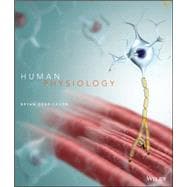Human Physiology is an integrated solution to the challenges students encounter when enrolled in a Human Physiology course. Incorporating digital and print content, this program supports students’ understanding of core physiological concepts while building the critical thinking skills that will prepare them for success in their future careers.
Critical thinking exercises help students apply their knowledge of physiology by asking them to address real-life situations and guiding them through the logical progression of thought processes needed to answer them. Making connections through Primary Literature helps students make connections to real-world applications. 3-D Physiology is a state-of-the-art animation series on the most difficult physiological concepts for you to teach and your students to learn. PowerPhys 3.0 is physiological simulation software authored by teaching lab faculty. The activities focus on core physiological concepts and reinforce techniques experienced in the lab.








